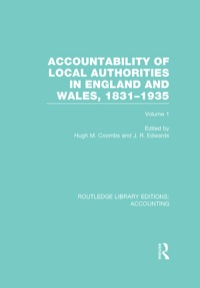Question
REQUIRED: The management informed you that it would not be possible to achieve the target cost and ask you for advice. Scrutinise the activities included
 REQUIRED:
REQUIRED:
The management informed you that it would not be possible to achieve the target cost and ask you for advice. Scrutinise the activities included in Table 1: The bill of activities for Gourmet Sausages and identify six (6) candidates for elimination as non-value-added activities. For each activity, explain why you consider it to be non-value-added. Discuss the possible root cause cost drivers for each of the non-value-added activities.
Note: To answer the question, you are required to read the IBIS industry report of Cured Meat and Smallgoods Manufacturing in Australia available in the Library Database IBIS. https://my-ibisworld-com.ezproxy.lib.swin.edu.au/download/au/en/industry/92/1/0/pdf
Prepare a Five Forces Analysis of the Cured Meat and Smallgoods Manufacturing in Australia industry. Specifically, you need to classify as to whether - 1) threats of new entrants, 2) rivalry among existing competitors, 3) threats of substitutes, 4) bargaining power of suppliers and 5) bargaining power of buyers - are high, medium or low. You are also required to provide two (2) reasons for each classification of the above noted Five Forces.
Note: you need to identify clearly the reasons for each classification.
Case Study 1A: New competitor on the market Family Smallgoods Pty Ltd, is a successful family-owned manufacturer of meat products located in Melbourne West. Recently, the management of Family Smallgoods noticed a rapidly downward trend in the sales of one of the company's unique and high-volume product, Gourmet Sausages. Gourmet Sausages sells for $14.00 per 750-pack based on a cost-plus pricing system. Prices are based on cost plus a 40 percent markup. The management employed a consultant to investigate as to why the sales of Gourmet Sausages are falling. The consultant informed the management that a new competitor entered the market recently. The competitor offers a similar product for $12.50 per 750- gram pack. The consultant advised the management to reduce the price to match the price of the competitor or offer a more superior product to the competitor's one. The management decided to reduce the price. However, in order to reduce the price, the cost of making the Gourmet Sausages also needed to be reduced. Over a number of weeks, the management were collecting the data in order to understand the processes and whether any cost reduction can be achieved. The following table contains the information for Gourmet Sausages: Table 1: The bill of activities for Gourmet Sausages Monthly Volume: 5,000 packs Quantity of Activity Cost per unit of Activities Driver Used Activity Driver Inspect meat 20 inspections $60/inspection Dispose of substandard meat 500 kilograms $2/kilogram Move to mincing room 60 barrow-loads $16/ barrow Load mincer* 40 loads $54/load Operate mincer 3,000 kilograms $1/kilogram Unload mincer* 40 loads $42/load Move to mixing room 40 barrow-loads $18/barrow Load mixer* 60 loads $40/load Operate mixer 60 loads $80/load Unload mixer* 60 loads $32/load Move to packing room 60 barrow-loads $10/barrow Pack meat into skins 5,000 skins $1/skin Move to smokehouse 100 trolley-loads $8/trolley Move to truck 100 trolley-loads $20/trolley Direct material cost per unit 4.352 Case Study 1A: New competitor on the market Family Smallgoods Pty Ltd, is a successful family-owned manufacturer of meat products located in Melbourne West. Recently, the management of Family Smallgoods noticed a rapidly downward trend in the sales of one of the company's unique and high-volume product, Gourmet Sausages. Gourmet Sausages sells for $14.00 per 750-pack based on a cost-plus pricing system. Prices are based on cost plus a 40 percent markup. The management employed a consultant to investigate as to why the sales of Gourmet Sausages are falling. The consultant informed the management that a new competitor entered the market recently. The competitor offers a similar product for $12.50 per 750- gram pack. The consultant advised the management to reduce the price to match the price of the competitor or offer a more superior product to the competitor's one. The management decided to reduce the price. However, in order to reduce the price, the cost of making the Gourmet Sausages also needed to be reduced. Over a number of weeks, the management were collecting the data in order to understand the processes and whether any cost reduction can be achieved. The following table contains the information for Gourmet Sausages: Table 1: The bill of activities for Gourmet Sausages Monthly Volume: 5,000 packs Quantity of Activity Cost per unit of Activities Driver Used Activity Driver Inspect meat 20 inspections $60/inspection Dispose of substandard meat 500 kilograms $2/kilogram Move to mincing room 60 barrow-loads $16/ barrow Load mincer* 40 loads $54/load Operate mincer 3,000 kilograms $1/kilogram Unload mincer* 40 loads $42/load Move to mixing room 40 barrow-loads $18/barrow Load mixer* 60 loads $40/load Operate mixer 60 loads $80/load Unload mixer* 60 loads $32/load Move to packing room 60 barrow-loads $10/barrow Pack meat into skins 5,000 skins $1/skin Move to smokehouse 100 trolley-loads $8/trolley Move to truck 100 trolley-loads $20/trolley Direct material cost per unit 4.352Step by Step Solution
There are 3 Steps involved in it
Step: 1

Get Instant Access to Expert-Tailored Solutions
See step-by-step solutions with expert insights and AI powered tools for academic success
Step: 2

Step: 3

Ace Your Homework with AI
Get the answers you need in no time with our AI-driven, step-by-step assistance
Get Started


